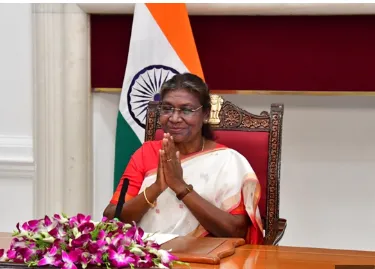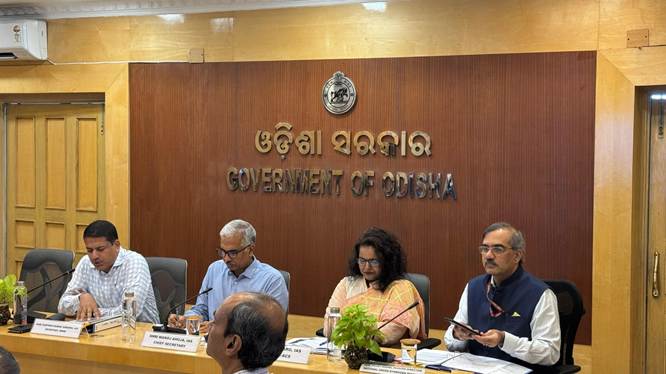

Delhi, July 11:Secretary, Ministry of New and Renewable Energy (MNRE), Santosh Kumar Sarangi held a meeting with the Chief Secretary, Odisha, Manoj Ahuja and other Senior Officers of Odisha State to discuss National Green Hydrogen Mission (NGHM) and PM Surya Ghar: Muft Bijli Yojana (PMSG: MBY), the two-flagship programme of the Government of India.
Chief Secretary emphasized that Odisha is strongly positioned to lead India’s Green Hydrogen transition. While acknowledging key challenges such as water availability, integration of large scale renewable energy, and developing enabling infrastructure, he noted state's strategic coastal location, robust industrial ecosystem, and proactive policy framework offers favorable conditions for Odisha to emerge as global exporter for Green Hydrogen derivatives.
The Secretary, MNRE highlighted that Odisha is uniquely positioned to play a critical role in India’s Green Hydrogen scale up and the state is attracting significant interest from domestic investors for production of Green Hydrogen derivatives like Green Ammonia/Green Methanol, particularly near key ports like Paradip and Gopalpur.
The meeting brought together senior officials from the Government of Odisha, key central ministries, and leading Green Hydrogen developers to deliberate on critical challenges in the development of large-scale Green Hydrogen/ Green Ammonia projects, particularly at the SEZ in Gopalpur.
These efforts aim to pave way for comprehensive roadmap in India’s rapidly growing Green Hydrogen ecosystem.
The Government of Odisha reiterated its commitment for a collaborative ecosystem and preferred investment destination for the production and export of Green Hydrogen derivatives, in a time bound manner.
PM Surya Ghar: Muft Bijli Yojana (PMSG: MBY) is one of the flagship initiatives of the Government of India aimed at promoting rooftop solar adoption across the country. The Ministry of New and Renewable Energy reviewed the State performance along with Chief Secretary. Following the review, directions given to District Collectors to expedite the pace of rooftop solar installations across the State. The Chief Secretary emphasized the need to conduct regular SLBC meetings, engage with vendors and bankers, and ensure prompt loan sanction and disbursement to facilitate implementation. Also advised to implement Utility-Led Aggregation (ULA) model, with a focused approach towards low-income households installing systems below 1 kW capacity.
The Ministry presented best practices adopted by other States for scaling up agricultural solarization under PM KUSUM. Taking note of these, the Chief Secretary directed the State Nodal Agency to implement Feeder Level Solarization in the State to extend the benefits of clean energy to the farming community.